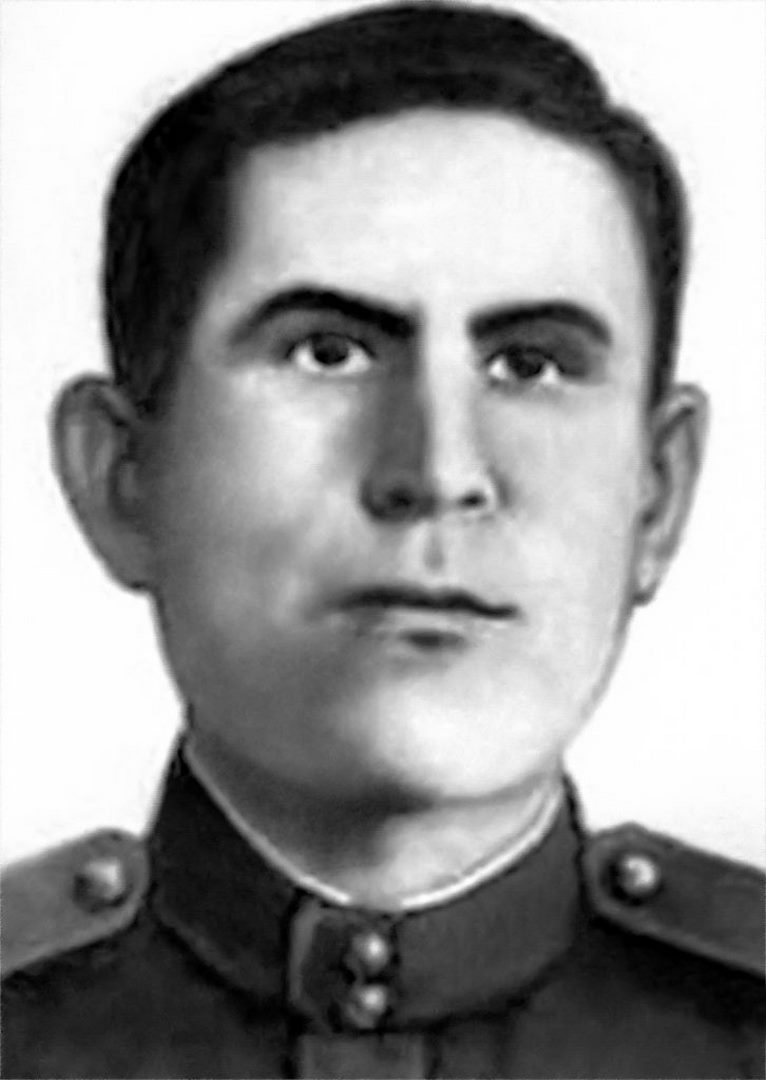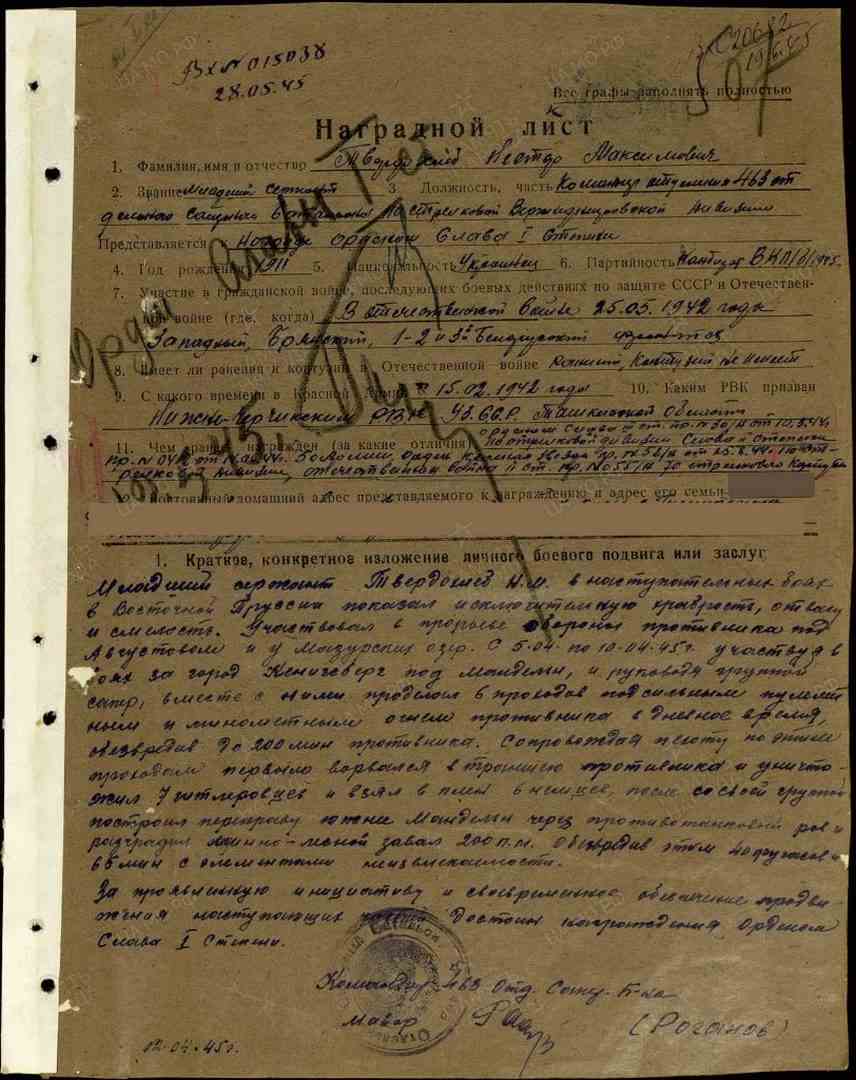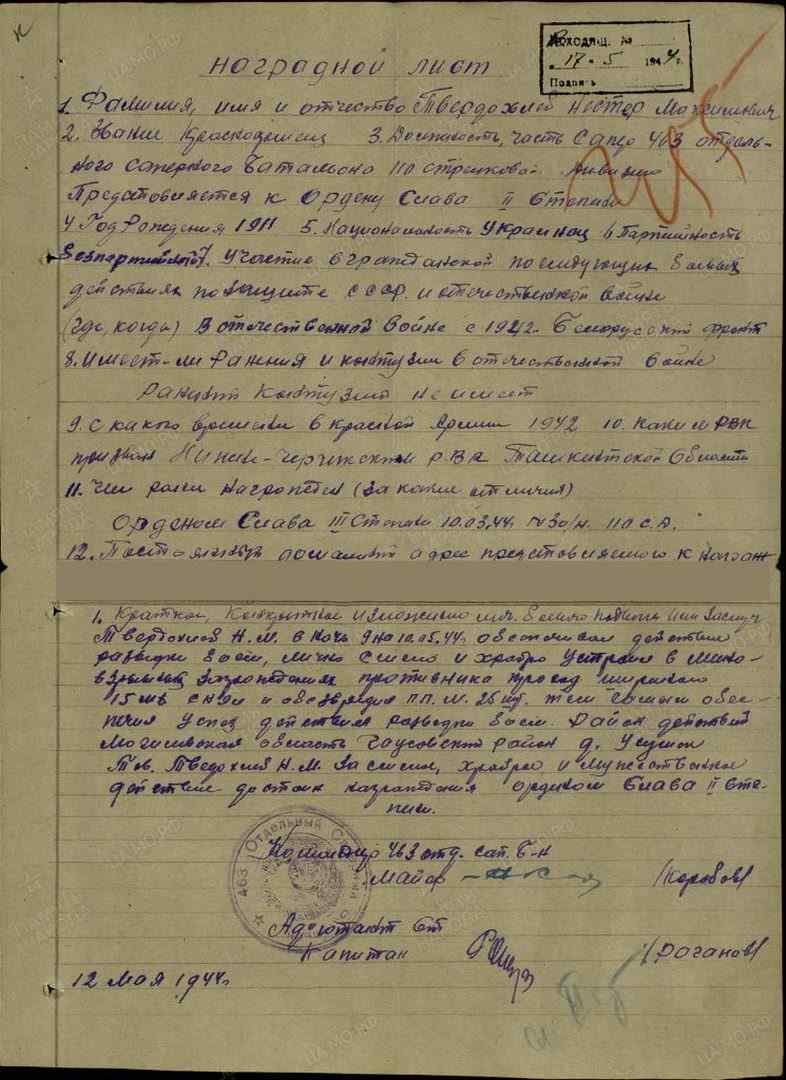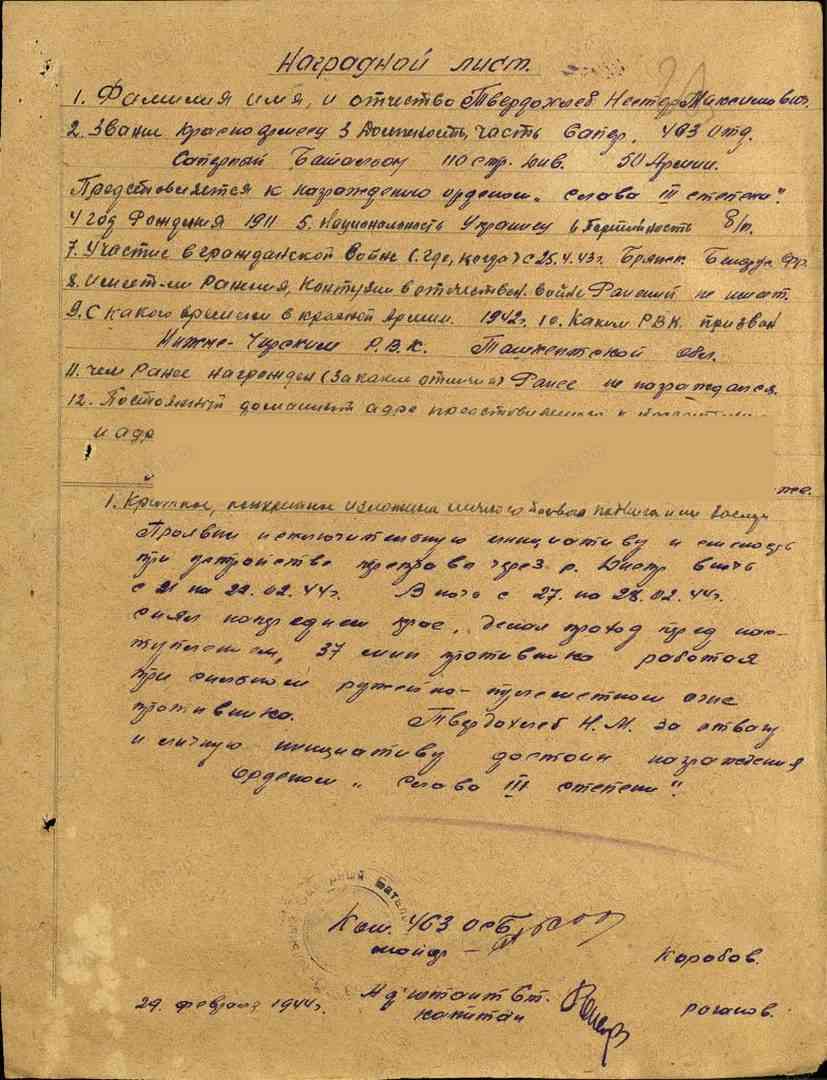
TVERDOXLEB NESTER MAKSIMOVICH
junior sergeant, a participant in World War II, Full cavalier of the Order of Glory (June 29, 1945)
He was born on February 23, 1911 in the village of Uspenovka in the Kustanai district of the Turgay region of the Russian Empire (now the Fedorovsky district of the Kustanai region of the Republic of Kazakhstan) in a peasant family. Ukrainian. Graduated from grade 4.
He worked as a tractor driver on a collective farm in Uzbekistan.
In February 1942 he was drafted into the Red Army by the Nizhne-Chirchik district military commissariat of the Tashkent region. Since May 1942, he participated in battles with the invaders, fought on the Bryansk, Belorussian, 1st and 3rd Belorussian fronts. By the beginning of 1944, he fought as a sapper of the 463rd separate combat engineer battalion of the 110th rifle division, in its composition went to Victory.
On the night of February 22, 1944, the Red Army soldier Tverdokhleb selflessly worked while guiding the crossing of the Dnieper River near the village of Selets (Bykhovsky district of the Mogilev region, Belarus). On the night of February 28, on the eve of the offensive, he made a pass in minefields at the front line of defense, and took 37 minutes under enemy fire.
By order of the 110th Infantry Division on March 10, 1944, Red Army soldier Tverdokhleb Nester Maksimovich was awarded the Order of Glory of the 3rd degree.
On the night of May 10, 1944, in the vicinity of the village of Usushek (Chausky district of the Mogilev region), the Red Army soldier Tverdokhleb, providing the actions of the reconnaissance group, made a 15-meter-wide passage in minefields and removed 25 anti-personnel mines. With his actions ensured successful reconnaissance in battle.
By order of the troops of the 50th Army of June 4, 1944, Red Armyman Tverdokhleb Nester Maksimovich was awarded the Order of Glory of the 2nd degree.
On June 28, 1944, in the Zatishye district (Mogilev region), he participated in guiding the crossing of the Dnieper River, and ensured the advancement of the 1289th Infantry Regiment. During the offensive from June 26 to July 20, he neutralized 275 enemy mines. In a battle near the village of Krasny Bogatyr, he personally destroyed 17 Nazis and captured 4.
He was awarded the Order of the Red Star From August 19 to September 7, 1944, in offensive battles in Poland, working onward of the advancing units, he took off more than 200 mines and blew up wire fences in 4 places. September 8, under enemy fire, he cleared from mines for the construction of a bridge on the banks of the Ruz River, entered into battle with 10 Nazis and held out until the approach of his squad.
For these battles he was awarded the Order of the Patriotic War of the 2nd degree.
At the final stage of the war, he participated in the East Prussian operation, the assault on the city of Koenigsberg (Kaliningrad). In these battles, Junior Sergeant Tverdokhleb commanded the sapper squad. On April 10, 1945, near the city of Königsberg (East Prussia, now the city of Kaliningrad), Junior Sergeant Tverdokhleb completed 6 passes in the enemy’s mine and wire fences, neutralized more than 400 mines and 40 land mines, of them 65 mines with elements of non-removability. Accompanying the infantry along these passages, he was the first to burst into the enemy’s trench, eliminated 7 Nazis and captured 6.
By decree of the Presidium of the Supreme Soviet of the USSR of June 29, 1945, Junior Sergeant Tverdokhleb Nester Maksimovich was awarded the Order of Glory of the 1st degree.
In November 1945 he was demobilized. He returned to Uzbekistan. He lived in the village of Soldatsky (now the city of Dustabad, Kuyichirchik district of Tashkent region). He worked as a tractor driver.
He died on September 25, 1981.






